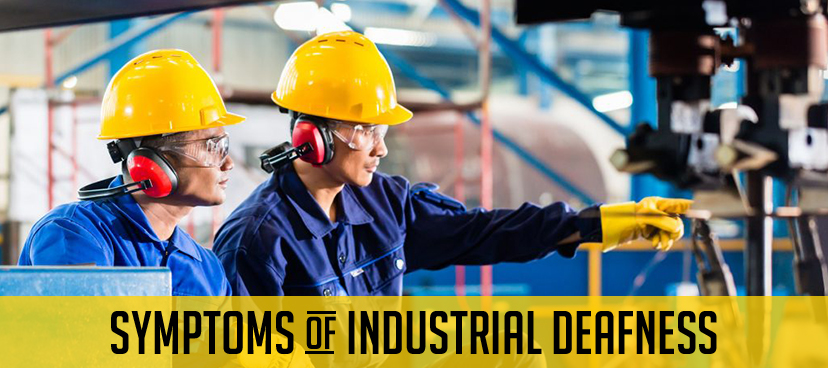No one ever wants to imagine that they could go deaf, but the reality is that certain conditions come about as a result of industrial environments.
Industrial deafness happens to be one of those professional-related ailments that are preventable. It is crucial to start by understanding more about how noise-induced deafness develops, its symptoms, and prevention methods, to comprehensively prevent and manage it.
By definition, anyone can develop industrial/occupational/noise-induced deafness on-the-job due to certain factors. Often, the exposure to regular loud noises for prolonged periods of time result in hearing deterioration and eventually hearing loss problems in some individuals.
The Different Degrees Of Occupational Deafness
The extent of occupational deafness, just like with deafness acquired in any typical situation, varies. The degrees of industrial deafness include:
1. Mild/Temporary Deafness
Which affects an individual’s ability to follow speech or hear the television in noisy environments. Mild deafness is the most common type of noise-induced deafness.
2. Moderate deafness
Affects an individual’s inner parts of the ear. People who suffer from this kind of deafness require hearing aids to hear well.
3. Severe Deafness
Affects a person’s ability to comprehend sounds completely, and hearing aids do not offer much support in enabling them to understand sounds.
Individuals who suffer from severe cases of deafness have to lip-read and use sign language to communicate.
4. Profound/Permanent Deafness
Is the gravest on the scale of deafness and people who suffer from it rely entirely on sign language and lip-reading to communicate.
How Does Industrial Deafness Occur?
People who work in noisy industrial environments and regularly get exposed to the loud sounds of tools or machinery have a high likelihood of developing occupational deafness.
The process of developing industrial deafness differs in different people. Some may develop it almost instantaneously and often as a result of an already preexisting hearing problem. However, for some people, it may take weeks, months, or even years to develop occupational hearing loss.
The occupations with the leading cases of work-induced deafness include:
- Construction and building
- Airline Industry
- Plumbing and electrical
- Manufacturing
- Engineering and mining
- Transport and railway workers
- Farm operators and agriculturists
- Processing industries and factories
- Council workers
The Common Symptoms Of Industrial Deafness
Not everyone will develop noise-induced hearing loss, and likewise, different people develop different symptoms signaling to occupational deafness.
However, some of the common symptoms of industrial deafness include:
- Markedly suffering from hearing reduction after leaving noisy workplaces.
- An individual may develop an annoying and repetitive ringing sensation. Clinically, the unexplained ringing noise is called tinnitus.
- Many people will also often start to miss conversations or TV sounds when there is background noise.
- Some people will start to develop problems by establishing the source of sounds.
- Another common symptom of noise-induced hearing loss is the inability to understand telephone speech.
- A missing doorbell or telephone ring is also another symptom of occupational deafness.
Diagnosing Occupational Deafness
Pure tone audiometry is a tool used to diagnose hearing loss.
The tests happen in a soundproofed room or booth with the patient wearing a set of earphones. The pure tone sounds then get replayed to the patient’s different volumes.
The results get plotted on an audiogram chart which an audiologist interprets to make the hearing loss diagnosis.
Treating Industrial Deafness
The treatment for work-induced hearing loss is dependent on the severity of the deafness.
The use of hearing aids is the common treatment method prescribed to people with industrial deafness. Open-fit hearing aids that leave the ear accessible to low-pitched tone have become popular choices.
The open-fit models come recommended because they enable the user to make use of what is left of their hearing for low-pitched sounds.
Types of Therapy
1. Sound therapy
Is yet another treatment option recommended for people with hearing problems. Sound therapy works by restoring muscle tone to recognize different sound frequencies.
2. The psychological opening
Also works as one of the hearing loss treatment options. Hearing issues may sometimes develop as a result of psychological reasons such as work pressure.
Addressing these problems with mental opening treatment therapy can help restore hearing.
Preventing Industrial Deafness
Occupational hearing loss issues are preventable with the right job safety measures.
In 2005, the Control of Noise at Work Regulations got implemented stating that employers should reduce work noise levels as much as possible.
Opting for quieter machinery, fitting silencers if possible, prevent metal impacts against each other, and preventing unnecessary machine vibrations all go towards reducing work noise levels. Protective hearing wear comes highly recommended in noisy workplaces.
“Semi-aural inserts, ear defenders, and earplugs are some of the protective earwear recommended for workplaces.”
Even with all the above measures, workers in noisy work environments should try to limit their overall exposure to loud noises.
Taking regular breaks at regular intervals can help to limit exposure to sounds and ultimately prevent occupational deafness. Anyone can become a victim of industrial deafness due to work-related conditions.
It takes the collaborative effort between employers and employees to reduce cases of noise-induced hearing loss at work.



